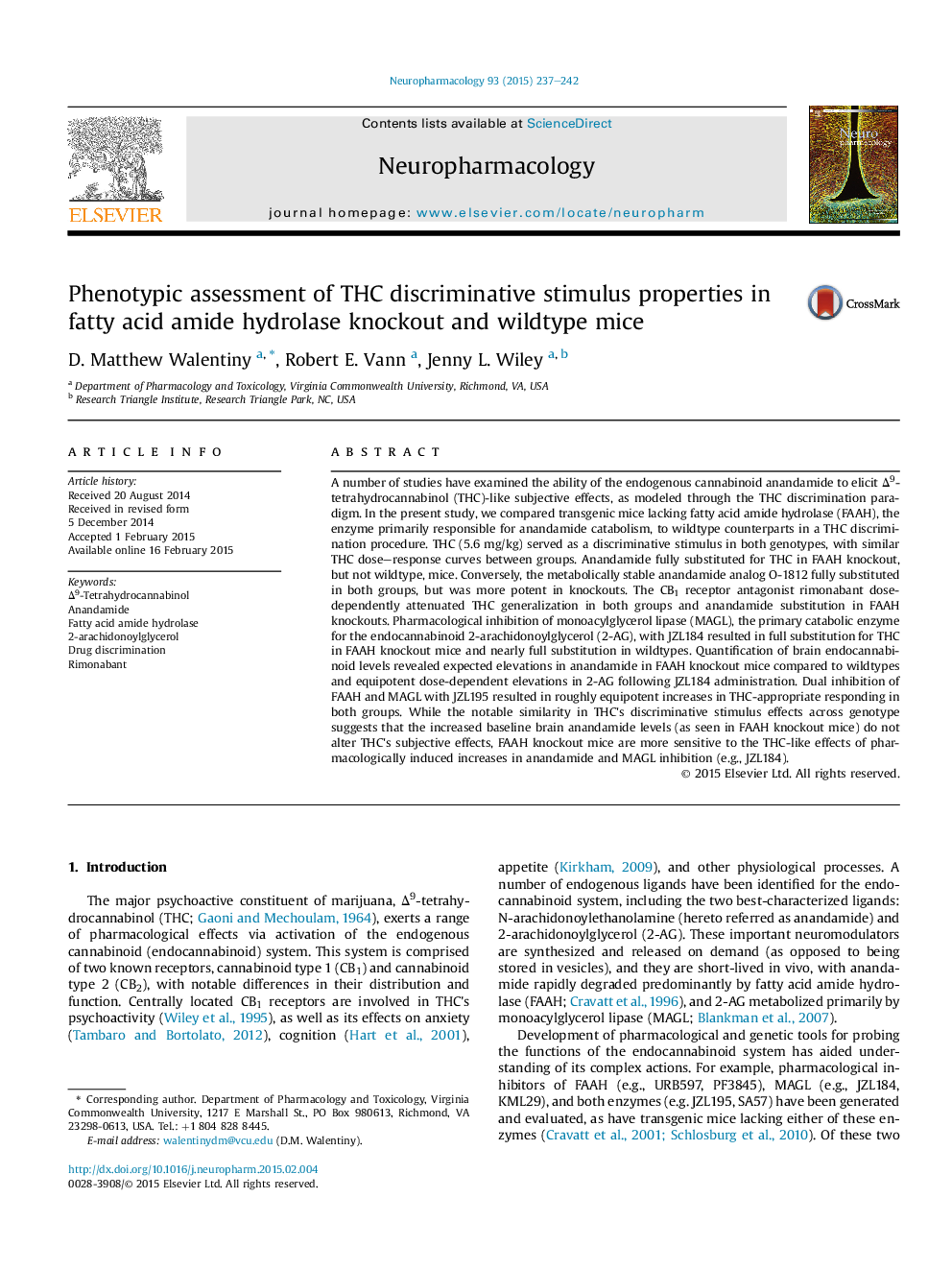| کد مقاله | کد نشریه | سال انتشار | مقاله انگلیسی | نسخه تمام متن |
|---|---|---|---|---|
| 5814042 | 1556621 | 2015 | 6 صفحه PDF | دانلود رایگان |
عنوان انگلیسی مقاله ISI
Phenotypic assessment of THC discriminative stimulus properties in fatty acid amide hydrolase knockout and wildtype mice
دانلود مقاله + سفارش ترجمه
دانلود مقاله ISI انگلیسی
رایگان برای ایرانیان
کلمات کلیدی
موضوعات مرتبط
علوم زیستی و بیوفناوری
علم عصب شناسی
علوم اعصاب رفتاری
پیش نمایش صفحه اول مقاله

چکیده انگلیسی
A number of studies have examined the ability of the endogenous cannabinoid anandamide to elicit Î9-tetrahydrocannabinol (THC)-like subjective effects, as modeled through the THC discrimination paradigm. In the present study, we compared transgenic mice lacking fatty acid amide hydrolase (FAAH), the enzyme primarily responsible for anandamide catabolism, to wildtype counterparts in a THC discrimination procedure. THC (5.6Â mg/kg) served as a discriminative stimulus in both genotypes, with similar THC dose-response curves between groups. Anandamide fully substituted for THC in FAAH knockout, but not wildtype, mice. Conversely, the metabolically stable anandamide analog O-1812 fully substituted in both groups, but was more potent in knockouts. The CB1 receptor antagonist rimonabant dose-dependently attenuated THC generalization in both groups and anandamide substitution in FAAH knockouts. Pharmacological inhibition of monoacylglycerol lipase (MAGL), the primary catabolic enzyme for the endocannabinoid 2-arachidonoylglycerol (2-AG), with JZL184 resulted in full substitution for THC in FAAH knockout mice and nearly full substitution in wildtypes. Quantification of brain endocannabinoid levels revealed expected elevations in anandamide in FAAH knockout mice compared to wildtypes and equipotent dose-dependent elevations in 2-AG following JZL184 administration. Dual inhibition of FAAH and MAGL with JZL195 resulted in roughly equipotent increases in THC-appropriate responding in both groups. While the notable similarity in THC's discriminative stimulus effects across genotype suggests that the increased baseline brain anandamide levels (as seen in FAAH knockout mice) do not alter THC's subjective effects, FAAH knockout mice are more sensitive to the THC-like effects of pharmacologically induced increases in anandamide and MAGL inhibition (e.g., JZL184).
ناشر
Database: Elsevier - ScienceDirect (ساینس دایرکت)
Journal: Neuropharmacology - Volume 93, June 2015, Pages 237-242
Journal: Neuropharmacology - Volume 93, June 2015, Pages 237-242
نویسندگان
D. Matthew Walentiny, Robert E. Vann, Jenny L. Wiley,